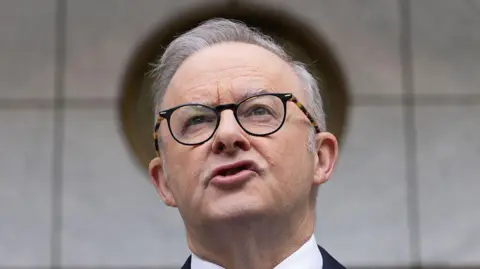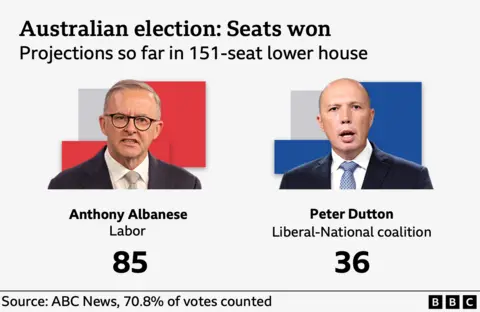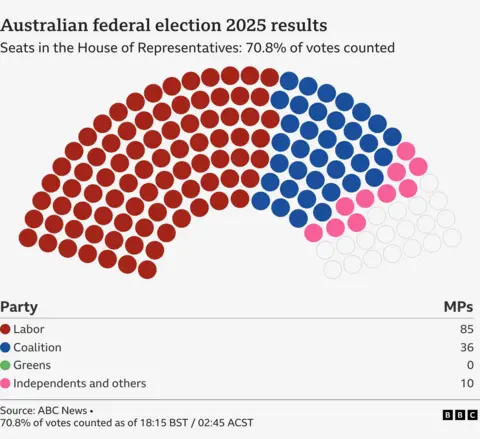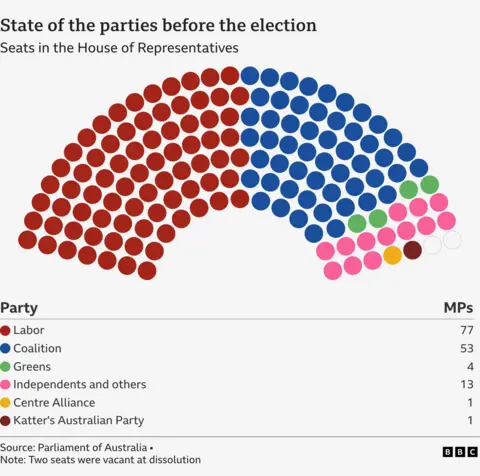A look at how Australia voted - in charts
Australian Prime Minister Anthony Albanese has been re-elected as the country's leader, becoming the first in decades to secure a second term.
He defeated opposition leader Peter Dutton of the centre-right Liberal-National coalition. Dutton also lost his seat in Dickson, Queensland - one he had held for 24 years.
It is a remarkable turnaround for Albanese, 62, whose popularity was at record lows at the start of the year as Australians grappled with a cost of living crisis and challenges in healthcare and housing.
US President Donald Trump's global tariff policy, which did not spare Australia, was also on voters' minds.
 Getty Images
Getty ImagesHere's a look at how that played out in charts, based on an unofficial count by Australian broadcaster ABC:

Albanese needed at least 76 seats in the House of Representatives to form a government.
Before the dissolution of parliament, Labor had a razor-thin majority of 77 seats.
With some 70.8% of the seats already counted, the ABC puts Labor on track to finish with 85 seats - far above the 76 seats needed, giving it a comfortable majority.
The Coalition is expected to gain 36 seats and the Independents stand at 10.

Here's a reminder of what the seats in the House of Representatives looked like before tonight's results.

Current projections mean Labor has so far claimed 34.7% of first-preference votes, with the Coalition trailing behind at 31.7%.
The Greens stand at 12.2% of first-preference votes.
As compared to the 2022 election, its clear Labor has increased its share of the national vote, with an increase of 2.1% so far - though that number could increase as counting goes on.
Official vote counting won't conclude for days but its clear that the Labor government is set to dramatically increase its majority - with swings towards them in almost every area.
